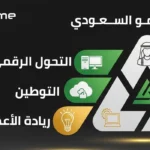أفضل عشر تقنيات التواصل الفعال في بيئة العمل لتعزيز وحدة الفريق
هل يفتقر فريقك إلى التواصل الفعّال في بيئة العمل والتفاهم المشترك بالرغْم من الجهود المبذولة؟
هل تلاحظ فتورًا في الروح الجماعية، أو تصاعدًا في سوء الفهم والتباعد بين الأفراد؟
في بيئات العمل الحديثة، أصبح غياب التواصل الفعّال أحد أبرز العوامل التي تؤدي إلى تفكك الفرق، انخفاض الإنتاجية، وتعثر المشروعات، حتى في ظل توافر الكفاءات الفردية. التواصل ليس مجرد نقل المعلومات، بل هو العمود الفقري للثقة، التعاون، وتحقيق الأهداف المشتركة.
في هذا المقال، نستعرض أهم 10 تقنيات اتصال فعّالة تعزز من وحدة الفريق، مستندين إلى أحدث الدراسات والممارسات المعتمدة في إدارة الفرق عالية الأداء. ستتعرف على استراتيجيات قابلة للتطبيق تساعدك على بناء بيئة عمل منسجمة، قائمة على الفهم المتبادل والدعم المشترك.
ما أهمية التواصل الفعّال في بيئة العمل الجماعي؟
لأن المشاريع لا تفشل بسبب نقص المهارات، بل بسبب رسائل غير مفهومة بين الأشخاص المناسبين.
التواصل الفعّال في بيئة العمل هو نظام التشغيل الحقيقي لأي فريق ناجح. من دونه؟ تتراكم الأخطاء، تتضارب التوقعات، ويبدأ الجميع في لعب لعبة “من المذنب؟”.
في الفرق الحديثة، حيث يعمل الأعضاء عن بعد، ويتنقلون بين أدوات مختلفة، يصبح وضوح الرسائل وسرعة تبادل المعلومات عنصرًا حاسمًا في إنجاز المهام.
ببساطة: الفريق الذي يتحدث بوضوح، يعمل بكفاءة.
وهذا لا يعني فقط إرسال بريد إلكتروني أقل ركاكة، بل إنشاء بيئة تواصل تدعم:
الشفافية
التوقعات الواضحة
التغذية الراجعة المستمرة
التأثير المباشر على الأداء والإنتاجية
عندما يكون التواصل فعال في بيئة العمل، يظهر ذلك فورًا على جودة الأداء وسرعة الإنجاز. تتجلى الفوائد في المحاور التالية:
- كفاءة توزيع المهام وتوضيح الأدوار: التواصل الفعّال يسهم في تحديد المهام بدقة، ويوضح المسؤوليات الفردية ضمن الإطار العام للعمل، ما يمنع التداخل في المهام أو الازدواجية في الجهود.
- تقليل الصراعات وسوء الفهم: التفاهم الواضح يحدّ من سوء تفسير التعليمات أو الأهداف، مما يقلل من التوترات الداخلية. كما يسهل التحقق من التوقعات المتبادلة، ويمنح القادة فرصة التدخل الوقائي قبل تصاعد النزاعات.
- رفع درجة الاستجابة والتكيّف مع التغييرات: فرق العمل التي تتواصل بفعالية قادرة على التفاعل السريع مع المتغيرات السوقية أو التنظيمية، نظرًا لامتلاكها آلية داخلية مرنة لنقل المعلومات ومعالجتها بشكل جماعي.
- تحسين جودة اتخاذ القرار: عندما تُبنى القرارات على معلومات واضحة ونقاشات منفتحة، يكون الناتج أكثر دَقَّة، وأقل عرضة للأخطاء أو سوء التقدير، مما يعزز نتائج الفريق على المستوى القصير والطويل.
كل هذه العوامل مجتمعة تؤكد أن بناء بيئة قائمة على التواصل الفعّال لا يعود فقط بالنفع على الأفراد، بل يُترجم إلى التأثير المباشر على الأداء والإنتاجية، خصوصًا عندما تتكامل هذه الممارسات مع نهج يوازن بين أدارة الأداء مع رفاهية الموظفين وتحقيق الأهداف
تقنيات التواصل الفعال في بيئة العمل لتعزيز وحدة الفريق
في بيئات العمل الديناميكية، لا تكفي النوايا الطيبة وحدها لبناء فريق متماسك. بل إن الأساس الحقيقي للتآزر والتكامل بين الأفراد يكمن في تطبيق تقنيات اتصال فعّالة وممنهجة، تضمن تدفقًا صحيًا للمعلومات، وتُرسّخ ثقافة الثقة والاحترام المتبادل. نستعرض في هذا القسم أبرز هذه التقنيات، بداية بـ “الاستماع الفعّال”، باعتباره حجر الأساس لأي تواصل ناجح.
1- الاستماع الفعّال
الاستماع الفعّال ليس مجرّد سماع الكلمات، بل هو عملية ذهنية وسلوكية معقدة تتطلب حضوراً ذهنياً كاملاً، وتعاطفاً حقيقياً مع المتحدث، وفهماً معمّقاً لمضمون الرسالة.
- الإنصات دون مقاطعة
إن منح المتحدث المساحة الكاملة للتعبير دون تدخل أو مقاطعة يعكس احتراماً واضحاً، ويعزز شعور الفرد بأهميته داخل الفريق. كما يُمكّن المستمع من استيعاب الرسالة بجوانبها الكاملة دون تشويه أو تحوير.
- إعادة صياغة الفهم للتأكيد
إحدى أكثر أدوات الاستماع الفعّال قوةً هي إعادة صياغة النقطة الأساسية بكلمات المستمع نفسه، مثل قول: “هل تقصد أنّ…”. هذه التقنية لا تؤكد فقط على حسن الفهم، بل تفتح المجال أمام توضيحات إضافية تعزز الدقة وتقوّي الحوار.
- استخدام الإشارات غير اللفظية الداعمة
لغة الجسد – مثل التواصل البصري، الإيماء بالرأس، أو وضعية الجلوس المتجهة نحو المتحدث – تُعد إشارات غير لفظية تُعزز الشعور بالاهتمام، وتُشجع الطرف الآخر على الاستمرار في التعبير بأريحية، مما يُثري التفاعل ويُعمّق الروابط الإنسانية داخل الفريق.
وفقاً لتقرير صادر عن مجلة Harvard Business Review، يُعد الاستماع النشط من أكثر المهارات ارتباطاً بنجاح القادة وبناء ثقافة تنظيمية إيجابية.
2- الشفافية والوضوح
تُعد الشفافية والوضوح في الاتصال من الركائز الأساسية لنجاح أي فريق عمل جماعي، لا سيما في البيئات الديناميكية التي تتطلب استجابة سريعة وتنسيقًا متكاملًا. فكلما كانت المعلومات متاحة ومفهومة، تقلّ احتمالية حدوث سوء الفهم أو تضارب التوجهات.
- مشاركة المعلومات أولًا بأول
ينبغي أن تعتمد القيادة على سياسة الإفصاح المرحلي عن المستجدات، سواء كانت متعلقة بأهداف المشروع، أو التحديات، أو القرارات التنظيمية. هذا لا يعزز فقط من شعور الفريق بالاطّلاع والمشاركة، بل يرسّخ لديهم حسّ الملكية والمسؤولية تجاه النتائج.
- خلق بيئة آمنة للتعبير عن الآراء
التواصل الواضح لا يتحقق فقط بإرسال المعلومات، بل يتطلب كذلك خلق مساحة نفسية آمنة يُتاح فيها لأعضاء الفريق التعبير عن آرائهم، وطرح تساؤلاتهم، بل والاعتراض على بعض القرارات دون خوف من التبعات. هذه البيئة تساهم في كشف المشكلات في وقت مبكر، وتعزز من الابتكار الجماعي المبني على الحُوَار الصريح.
3- التغذية الراجعة البنّاءة
تُعد التغذية الراجعة البنّاءة من الركائز الأساسية لأي بيئة عمل تسعى إلى التحسين المستمر وتعزيز الأداء الجماعي. فهي لا تُستخدم فقط لتصحيح المسار، بل تُسهم في تنمية الأفراد وبناء ثقافة تواصل قائمة على الاحترام المتبادل.
المبادئ الأساسية للتغذية الراجعة البنّاءة
استخدام أسلوب “أنا ألاحظ…” بدلًا من النقد الشخصي
يتيح هذا الأسلوب نقل الملاحظات من منظور موضوعي وغير هجومي، مما يقلل من احتمالات الدفاعية أو التوتر. فعلى سبيل المثال، بدلًا من القول: “أنت غير منظم”، يمكن القول: “لاحظت أن التقارير غالبًا ما تصل بعد الموعد المحدد”.
- التوازن بين المدح والتطوير
من الضروري أن تتضمن التغذية الراجعة عناصر إيجابية تُبرز النقاط القوية لدى الموظف، إلى جانب الملاحظات التي تستهدف التحسين. هذا التوازن يعزز الدافعية، ويُشعر الموظف بالتقدير بدلاً من النقد.
فوائد التطبيق الفعّال للتغذية الراجعة
- بناء علاقة عمل صحية تقوم على الثقة والشفافية.
- تمكين الأفراد من إدراك نقاط القوة والفرص التطويرية.
- خلق ثقافة تعلم مستدام داخل الفريق.
عندما تُمارس التغذية الراجعة بوعي واحتراف، تتحول من أداة تقييم إلى أداة تطوير، وتصبح محفزاً رئيسياً لنمو الأفراد ونجاح الفرق.
4- التواصل غير اللفظي
لا يقتصر الاتصال الفعّال في بيئة العمل على الكلمات المنطوقة فحسب، بل يتعداه ليشمل التواصل غير اللفظي الذي يلعب دورًا بالغ الأهمية في نقل الرسائل وبناء الثقة داخل الفريق. تشير دراسات علم النفس التنظيمي إلى أن نسبة كبيرة من فهمنا للرسائل تعتمد على إشارات غير لفظية مثل تعابير الوجه، وحركات الجسد، ونبرة الصوت.
- أهمية لغة الجسد وتعبيرات الوجه
تُعد لغة الجسد أداة تواصل قوية تظهر مدى الانتباه، الاهتمام، أو حتى التحفظ. على سبيل المثال، الحفاظ على التواصل البصري، الإيماء بالرأس، أو الميل الخفيف نحو المتحدث، جميعها إشارات إيجابية تعزز الشعور بالاحترام والانخراط. في المقابل، قد تُفسر إشارات كالتجهم أو انعدام التفاعل الجسدي على أنها رفض أو لامبالاة، حتى لو لم يُنطق بذلك لفظيًا.
- الاتساق بين النبرة والمحتوى
يلعب الاتساق بين نبرة الصوت والمحتوى المنطوق دورًا محوريًا في إيصال الرسالة بوضوح. فالنبرة الودية عند تقديم الملاحظات، أو الحزم عند توضيح المهام، تساهم في تعزيز الفهم الصحيح وتجنب سوء التأويل. غياب هذا الاتساق قد يُضعف المصداقية أو يُربك المتلقي.
5- القرارات التعاونية
تُعتبر القرارات التعاونية من الركائز الأساسية في تعزيز وحدة الفريق ورفع مستوى الأداء الجماعي، حيث تتيح مشاركة جميع أعضاء الفريق في اتخاذ القرارات، مما ينعكس إيجابيًا على الالتزام والتنفيذ.
- استخدام العصف الذهني والتصويت
يُعد العصف الذهني أداة فعّالة لتوليد الأفكار والحلول من خلال تشجيع الجميع على التعبير عن آرائهم بحرية دون نقد مسبق، مما يفتح آفاقًا جديدة للتفكير الإبداعي. بعد ذلك، يمكن تطبيق آلية التصويت لاختيار أفضل الأفكار، وهو ما يضمن شفافية العملية واتخاذ القرار بطريقة ديمقراطية تعزز شعور الجميع بالمساهمة. - تقبل وجهات النظر المختلفة
إن تقبل وجهات النظر المتنوعة يثري النقاش ويُثري القرارات المتخذة، ويُعد عاملًا مهمًا لبناء ثقافة احترام وتقدير الاختلاف داخل الفريق. إذ يساهم ذلك في تقليل النزاعات، ويُعزز بيئة عمل تشجع التعاون والابتكار، مما يؤدي في النهاية إلى تحقيق أهداف المؤسسة بكفاءة وفعالية أكبر.
6- الوضوح والاختصار في الرسائل
الوضوح والاختصار من أهم عناصر الاتصال الفعّال داخل بيئة العمل الجماعي، إذ يساهمان في ضمان وصول الرسائل بشكل دقيق وسريع، مما يقلل من فرص سوء الفهم ويُعزز كفاءة التواصل بين أعضاء الفريق.
- تجنب الغموض والمصطلحات التقنية غير المفهومة
يجب صياغة الرسائل بأسلوب بسيط وواضح، مع تجنب استخدام المصطلحات التقنية أو التعبيرات المعقدة التي قد تخلق لبساً أو تعقيداً غير ضروري، خاصة عند مخاطبة أعضاء الفريق ذوي الخلفيات المتنوعة. الرسائل الواضحة تسهل على الجميع فهم المطلوب بسرعة واتخاذ الإجراءات المناسبة دون الحاجة إلى تفسيرات إضافية.
- تأكيد استيعاب الرسالة بالسؤال أو التلخيص
من الممارسات الفعالة لضمان فهم الرسائل هي تشجيع المتلقين على إعادة صياغة المحتوى أو تلخيصه، أو طرح أسئلة توضيحية. هذه الخطوة تساعد على التحقق من مدى وضوح الرسالة وتعزز التفاعل بين الأطراف، مما يقلل من الأخطاء الناتجة عن سوء الفهم ويُعزز دقة تنفيذ المهام.
7- الذكاء العاطفي والتعاطف
يُعد الذكاء العاطفي والتعاطف من الركائز الأساسية في تحقيق تواصل فعّال داخل بيئة العمل الجماعي، حيث يساهمان بشكل مباشر في تعزيز التفاهم والانسجام بين أعضاء الفريق.
- فهم مشاعر الزملاء والتفاعل معها
يتطلب التواصل الفعّال قدرة الفرد على قراءة وفهم المشاعر التي يمر بها زملاؤه في العمل، سواء كانت إيجابية أو سلبية، والاستجابة لها بطريقة تراعي مشاعرهم وتدعم بيئة عمل أكثر إنسانية وتعاونًا. هذا الفهم يفتح أبواب الحُوَار البناء ويسهم في حل النزاعات بشكل أكثر سلاسة.
- ضبط الانفعالات الشخصية في أثناء التواصل
يمثل التحكم في الانفعالات الشخصية أثناء التفاعل مع الآخرين مهارة حيوية، تساعد على الحفاظ على مناخ هادئ ومهني، وتقليل التوترات التي قد تعيق سير العمل. ضبط النفس يضمن توصيل الرسائل بشكل موضوعي ومهذب، مما يعزز الاحترام المتبادل ويُقوي الروابط بين أعضاء الفريق
8- الاجتماعات الفردية والدورية
تُعد الاجتماعات الفردية والدورية من الأدوات المهمة لتعزيز التواصل الفعّال داخل الفريق، حيث توفر فرصة للتواصل المباشر بين القائد وأعضاء الفريق بشكل منتظم.
- تخصيص وقت للمتابعة الشخصية
تخصيص وقت للاجتماعات الفردية يُمكن القائد من متابعة تقدم كل عضو بشكل شخصي، وفهم التحديات التي يواجهها، مما يساهم في تقديم الدعم المناسب وتعزيز روح الانتماء.
- تحديد أهداف قصيرة وتحفيزية
تساعد الاجتماعات الدورية على مراجعة الأهداف بشكل دوري، وتحديد أهداف قصيرة الأمد تحفز الأعضاء على تحقيقها، بالإضافة إلى تعزيز الشعور بالمسؤولية والمشاركة في النجاح الجماعي.
9- الاستفادة من أدوات التكنولوجيا مثل بيك تايم
تُعد منصة بيك تايم من الأدوات التكنولوجية المتقدمة التي تسهم في تعزيز التواصل وتنظيم العمل داخل الفريق بشكل فعّال. توفر المنصة إمكانيات متعددة تساعد في تحسين إدارة الوقت والمهام بشكل دقيق.
- تتبع وقت العمل وتنظيم المهام
تمكّن أداة بيك تايم المستخدمين من تتبع وقت العمل لكل عضو في الفريق بدقة، مما يساهم في تحليل الأداء وتحسين الإنتاجية. كما تتيح تقسيم المشاريع إلى مراحل وقوائم مهام فرعية مع تحديد الأولويات، لضمان متابعة دقيقة لسير العمل.
- تعزيز التعاون وتقليل الانقطاعات
توفر المنصة إمكانية مشاركة التحديثات والملفات بشكل فوري بين أعضاء الفريق، مما يسهل التعاون ويُعزز التواصل. بالإضافة إلى ذلك، تُساعد بيك تايم في وضع قواعد واضحة لاستخدام قنوات الاتصال المختلفة وتحديد توقيتاتها، مما يقلل من الانقطاعات ويضمن بيئة عمل منظمة وأكثر تركيزًا.
10- الاحتفال بالإنجازات والتقدير
يُعتبر الاحتفال بالإنجازات والتقدير من العوامل المحفزة التي تعزز الروح الجماعية والتواصل الإيجابي داخل الفريق. إذ يسهم الاعتراف العلني بالجهود المبذولة في رفع معنويات الأعضاء وزيادة انتمائهم للمؤسسة.
- الاعتراف العلني والمكافآت الرمزية
تقديم الشكر والاعتراف بالنجاحات أمام الفريق أو عبر قنوات الاتصال الرسمية يعزز من شعور الأفراد بالتقدير. كما تلعب المكافآت الرمزية دورًا مهمًا في تحفيز الأداء المستدام وتشجيع المبادرات الفردية والجماعية.
- تحفيز أعضاء الفريق للتقدير المتبادل
إن تشجيع ثقافة التقدير بين أعضاء الفريق يعزز من العلاقات الإنسانية ويقوي الروابط المهنية. التقدير المتبادل يخلق بيئة عمل إيجابية تحفز الجميع على التواصل الفعّال والعمل بروح الفريق الواحد.
نصائح إضافية لبناء ثقافة تواصل فعّالة
- البدء من القادة: القدوة أولاً
يجب أن يكون القادة هم القدوة في تطبيق مبادئ التواصل الفعّال، حيث يؤثر سلوكهم على باقي أعضاء الفريق ويحفزهم على تبني نفس الأسلوب. - التدريب المستمر على مهارات التواصل
الاستثمار في تطوير مهارات التواصل من خلال برامج تدريبية مستمرة يعزز من قدرة الفريق على التعامل مع التحديات بوضوح وفهم أفضل. - مراجعة أدوات الاتصال وتحسينها بانتظام
تقييم الأدوات والقنوات المستخدمة في التواصل بشكل دوري يضمن ملاءمتها لاحتياجات الفريق ويساعد في تبني تقنيات جديدة تعزز الفعالية والإنتاجية.
يُشكّل التواصل الفعّال العمود الفقري لأي فريق ناجح، إذ يؤسس لبيئة من التعاون والتفاهم المتبادل بين أفراده. عبر تطبيق هذه التقنيات المتنوعة، يمكن للقائد بناء فريق متماسك يعزز الإنتاجية ويحقق الأهداف المشتركة بكفاءة عالية.
ابدأ بتبني تقنية واحدة في فريقك، وستلاحظ تدريجيًا كيف يتحول الأداء وروح الجماعة إلى الأفضل بشكل ملموس ومستدام.
أسئلة شائعة
ما الفرق بين التواصل الجيد والتواصل الفعّال؟
التواصل الجيد يعني تبادل المعلومات بين الأفراد بشكل واضح، بينما التواصل الفعّال يتجاوز ذلك ليشمل التأكد من فهم الرسائل، تفاعل الأعضاء، وتحقيق أهداف محددة تعزز الأداء الجماعي.
ما أبرز الأخطاء التي تُضعف وحدة الفريق؟
من الأخطاء الشائعة: غياب الشفافية، قلة الاستماع الفعّال، نقص التغذية الراجعة البناءة، سوء إدارة الصراعات، وعدم وضوح الأدوار والمسؤوليات.
كيف أقيس نجاح استراتيجيات التواصل في بيئة العمل؟
يمكن قياس النجاح من خلال مؤشرات مثل تحسن الأداء والإنتاجية، زيادة رضا الموظفين، تقليل النزاعات، وتحقيق الأهداف المشتركة ضمن الجدول الزمني المحدد.
- يونيو 10, 2025
- PeakTime Team
- 4:16 م
أحدث المقالات
Recent Posts
- اليوم الوطني السعودي: تاريخ التوحيد ورؤية المستقبل في الابتكار والتنمية
- كيف تقود ريادة الأعمال والعمل عن بُعد مستقبل الاقتصاد السعودي 2025؟
- فرص نمو الشركات السعودية في 2025: حين يلتقي التوطين مع التحول الرقمي
- توطين الوظائف في السعودية 2025: القرارات الجديدة والقطاعات المستهدفة
- نظام العمل عن بعد السعودي: الدليل الشامل لفهم وتطبيق قوانين العمل عن بعد




